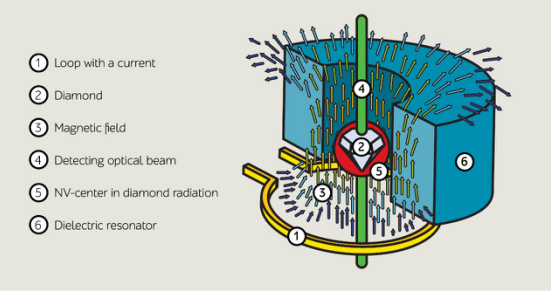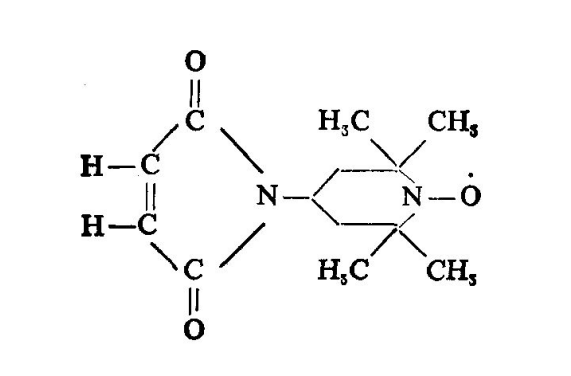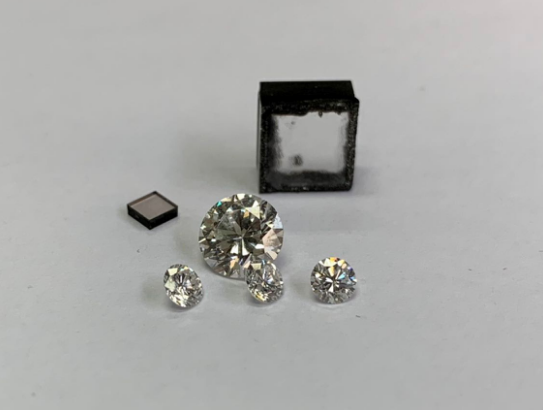Company tel:+86-379-63184520
Contact number:+86-15937921751
Postcode:471000
Email:info@yuxindiamond.com
Address:3-1-508 Luoyang National University Science Park, No. 2 Penglai Road, Jianxi District, Luoyang, China 471000
Physicists Design New Antenna for Next-generation Super-sensitive Magnetometers

Scientists from ITMO University and Lebedev Physical Institute of the Russian Academy of Sciences have proposed a new microwave antenna that creates a uniform magnetic field in large volume. It is capable of uniform, coherent addressing of the electronic spins of an ensemble of nanodiamond structure defects. This can be used to create super-sensitive magnetic field detectors for magnetoencephalography in the study and diagnosis of epilepsy and other diseases. The results are published in JETP Letters.
Studying magnetic field characteristics is necessary in many industries, from navigation to medicine. For example, magnetoencephalography can register magnetic fields arising from brain activity, as well as measure the activity of individual neurons. This method is used in the diagnosis of epilepsy and Alzheimer's disease, and the preparation brain surgery. However, magnetoencephalography requires super-sensitive magnetometers, devices recording the characteristics of very weak magnetic fields.
Therefore, scientists are constantly looking for new ways to create super-sensitive magnetometers. Such devices should operate at room temperature at low input power. Moreover, they should be compact and relatively cheap. One of the promising options in this field is nanodiamonds with defects. The nanodiamonds are carbon nanostructures with a high refractive index and high thermal conductivity, which have almost no interaction with other substances. They may contain complex internal structural defects, such as nitrogen-vacancy (NV) centers.
"Such defects may be created artificially. When a carbon atom is removed from the diamond's crystal lattice, the resulting vacancy is bonded to the implanted nitrogen atom. The structure of this defect is unique, since the electronic spins of the individual center are manipulated by electromagnetic fields. Depending on the properties of the surrounding microwave magnetic field, the state of the electron spin of the NV-center is changing, and this can be recorded with optical methods," explains Dmitry Zuev, researcher at the Physics and Technology Faculty of ITMO University.

However, as the response of single NV-center is not strong enough, an ensemble of such defects is necessary in order to improve the sensitivity of sensors. This is where a problem arises, since the reaction of the electron spins of all the centers in the nanodiamond must be coherently addressed and manipulated. In other words, they must all be in a microwave magnetic field of the same intensity so that their response can be the same.
Scientists from ITMO University and Lebedev Physical Institute of the Russian Academy of Sciences suggested using a dielectric microwave antenna to coherently control the electron spins of NV-centers in the whole nanodiamond volume. The antenna is represented by a dielectric cylinder with an internal hole containing nanodiamond with many NV-centers. This system is excited by an electric current. Once an input power about 5 watts is applied, the dielectric cylinder creates a strong uniform magnetic field around the nanodiamond. As a result, the electron spins of all the NV-centers are synchronized in the same way and thus provide a high magnetometers sensitivity.
"The main challenge of this work was to achieve coherent control of the electron spins of NV-centers in the entire volume of the commercially available nanodiamond sample. We decided to use an antenna based on a dielectric resonator for this. We calculated the required antenna parameters and estimated the expected effect. Experimental studies were conducted in collaboration with the research group of Professor Alexey Akimov in Moscow. We collected an experimental sample and measured the Rabi frequency, which shows the frequency with which the electron spins can be manipulated. The larger this value, the better. We got a Rabi frequency of 10 megahertz. Such a result was never experimentally shown for a volume sample before, so this is actually a breakthrough," said Polina Kapitanova, researcher at the Physics and Technology Faculty of ITMO University.
Measuring the Rabi frequency is the first step towards determining the sensitivity of the new magnetometer. Scientists plan to continue experiments and theoretical studies, searching for new antenna configurations that will provide even higher quality magnetometers.
Diamond, as one of the most special materials in natural world, is featured with the highest hardness, low friction coefficient, high elasticity modulus, high thermal conductivity, high insulation class, wide energy gap, great sound propagation rate and favorable chemical stability, which are presented in below Table. In spite of such unique features, the natural diamond has always been existed in the form of gem, with its variability and rareness sharply limiting its application. Luoyang Yuxin Diamond Co., Ltd‘s CVD Diamond film, on the other hand, integrates such physical and chemical properties, with lower cost than natural diamond and applicable to be made into various shapes, thus enjoying extensive application prospect in electronic industry, optical field and mechanical industry.








